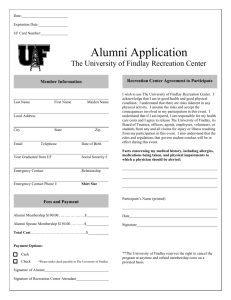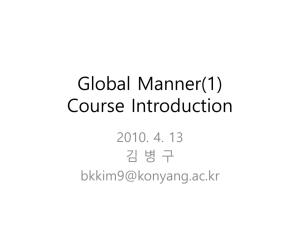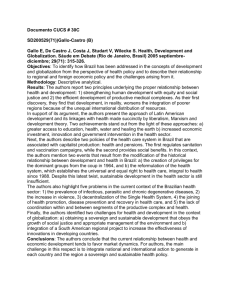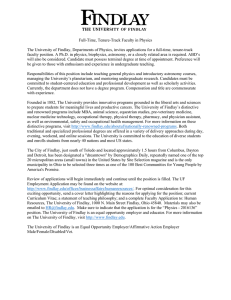Book Review Power and Plenty
advertisement
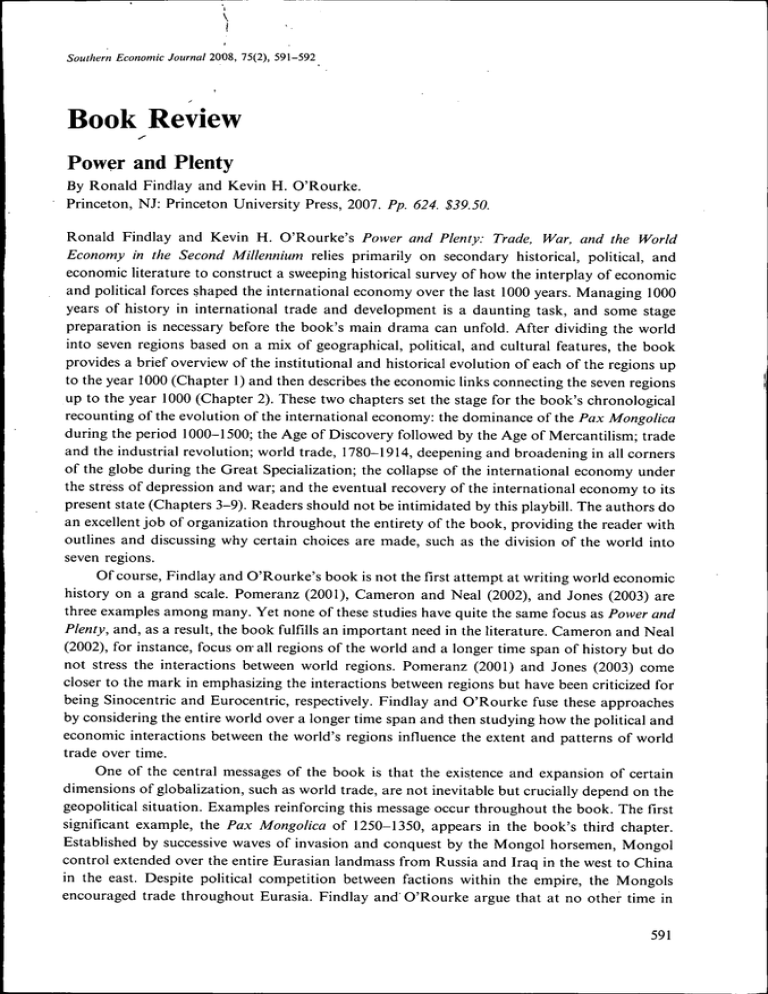
Southern Economic Journal 2008, 75(2), 591-592 Book Review Power and Plenty By Ronald Findlay and Kevin H. O'Rourke. Princeton, NJ: Princeton University Press, 2007. Pp. 624. $39.50. Ronald Findlay and Kevin H. O'Rourke's Power and Plenty: Trade, War, and the World Economy in the Second Millennium relies primarily on secondary historical, political, and economic literature to construct a sweeping historical survey of how the interplay of economic and political forces shaped the international economy over the last 1000 years. Managing 1000 years of history in international trade and development is a daunting task, and some stage preparation is necessary before the book's main drama can unfold. After dividing the world into seven regions based on a mix of geographical, political, and cultural features, the book provides a brief overview of the institutional and historical evolution of each of the regions up to the year 1000 (Chapter 1) and then describes the economic links connecting the seven regions up to the year 1000 (Chapter 2). These two chapters set the stage for the book's chronological recounting of the evolution of the international economy: the dominance of the Pax Mongólica during the period 1000-1500; the Age of Discovery followed by the Age of Mercantilism; trade and the industrial revolution; world trade, 1780-1914, deepening and broadening in all corners of the globe during the Great Specialization; the collapse of the international economy under the stress of depression and war; and the eventual recovery of the international economy to its present state (Chapters 3-9). Readers should not be intimidated by this playbill. The authors do an excellent job of organization throughout the entirety of the book, providing the reader with outlines and discussing why certain choices are made, such as the division of the world into seven regions. Of course, Findlay and O'Rourke's book is not the first attempt at writing world economic history on a grand scale. Pomeranz (2001), Cameron and Neal (2002), and Jones (2003) are three examples among many. Yet none of these studies have quite the same focus as Power and Plenty, and, as a result, the book fulfills an important need in the literature. Cameron and Neal (2002), for instance, focus on- all regions of the world and a longer time span of history but do not stress the interactions between world regions. Pomeranz (2001) and Jones (2003) come closer to the mark in emphasizing the interactions between regions but have been criticized for being Sinocentric and Eurocentric, respectively. Findlay and O'Rourke fuse these approaches by considering the entire world over a longer time span and then studying how the political and economic interactions between the world's regions influence the extent and patterns of world trade over time. One of the central messages of the book is that the existence and expansion of certain dimensions of globalization, such as world trade, are not inevitable but crucially depend on the geopolitical situation. Examples reinforcing this message occur throughout the book. The first significant example, the Pax Mongólica of 1250-1350, appears in the book's third chapter. Established by successive waves of invasion and conquest by the Mongol horsemen, Mongol control extended over the entire Eurasian landmass from Russia and Iraq in the west to China in the east. Despite political competition between factions within the empire, the Mongols encouraged trade throughout Eurasia. Findlay and O'Rourke argue that at no other time in 591 592 Book Review history were the trade routes across Central Asia busier or safer than they were during the Pax Mongólica. The authors are so convinced by the success of the Pax Mongólica that they go so far as to argue that the period marks the beginning of globalization. A second example from Chapter 8, World War I, illustrates the world economy's vulnerability to geopolitical turmoil. World War I sparked the fire that would eventually burn down the world trade system. The interwar depressions and World War II kept the fire burning. These events brought an end to what many scholars refer to as the first era of globalization. Only in recent decades have world trade fiows reached their pre-World War I levels. In evaluating the book overall, two minor criticisms come to mind. First, the subtitle of the book, although not entirely misleading, might cause some readers disappointment if they expect the first and second halves of the second millennium to receive roughly equal treatment. The book devotes 55 out of approximately 550 pages to the world economy over the years 1000-1500. (By contrast, even the introduction chapters. Chapters 1 and 2, constitute more pages, 86 in total.) Obviously, data for this period are scarce, and therefore limit what the economic historian can quantitatively say about the period. Nevertheless, the authors leave the reader wondering about the choice to devote so little space to the years 1000-1500, especially given that the authors so thoroughly guide the reader through other parts of the book. Second, given the message that the extent of globalization depends on the geopolitical situation, the, book makes a puzzling omission in its conclusion regarding the future challenges facing the world economy (Chapter 10). The authors see the conflicts of the future playing out primarily between regions and states and leave little room for the growing importance of individuals. Regions and states are appropriate units of analysis for the past 1000 years. Yet it remains to be seen whether regions and states will be the most important actors in a world in which technology allows individuals to leverage far greater amounts of power than in previous periods of history. Indeed, a small group of terrorists caused government authorities to temporarily shut down air transportation to and from the United States after the attacks of September 11, 2001. It is not inconceivable that future acts could have long-term effects on international trade and the world economy. These criticisms aside. Power and Plenty serves as an excellent one-volume survey on the role played by the interaction of economic and political forces in shaping the world economy of the last 1000 years. The book should be read by any serious student of world economic history, international trade, or international relations. References Cameron, Rondo, and Larry Neal. 2002. A concise economic history of the world: From Paleolithic times to the present. New York: Oxford University Press. Jones, Eric. 2003. 77;« European miracle: Environments, economies and geopolitics in the history of Europe and Asia. Cambridge, UK: Cambridge University Press. Pomeranz, Kenneth. 2001. The great divergence: China. Europe, and the making of the modern world economy. Princeton, NJ: Princeton University Press. John T. Dalton University of Minnesota
